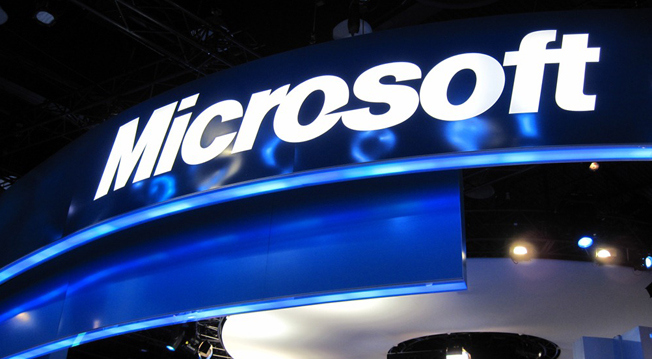Google sells Motorola unit to Lenovo for $2.9B
Source: Cnet

The Droid Ultra is one of Motorola's key franchises in the US.
(Credit: CNET)
Google is unloading Motorola Mobility onto Chinese PC maker Lenovo.
Google
confirmed on its site that it has sold Motorola for $2.91 billion, consisting of $660 million in cash and $750 million in Lenovo shares, with the remaining $1.5 billion paid in the form of a three-year promissory note.
Reuters earlier reported on the deal.
Lenovo gets the Motorola brand, as well as its portfolio of devices, including the
Moto X and Moto G. In addition, it will also receive more than 2,000 patent assets, while Google will retain control of a majority of the patents it originally obtained when it acquired Motorola several years ago.
A deal instantly gives Lenovo, which has a thriving smartphone business in China but few other places, an established global brand. Google, meanwhile, will shed a business that has continually dragged down its profits.
The deal marks one of the worst investments in Google's history. In 2012, Google completed its acquisition of Motorola Mobility for $12.5 billion. At the time, it was thought that the primary reason for the acquisition was the treasure trove of Motorola patents that would help Google defend it and its partners against Apple.
The patents, however, have proven to be less than effective in warding off lawsuits, and much of the legal fighting as gone on between Apple and Samsung, with Google only tangentially related. Google and Samsung
recently signed their own cross-licensing pact.
Troubled handset business The handset side of Motorola, however, has always been a stress point between Google and its partners. While Google said it maintained a division between its
Android group and the Motorola unit, other vendors have privately expressed irritation that a partner was also a competitor.
Google did legitimately try to revive the once vaunted Motorola brand with unique products, including the Moto X, which was built in the US and could be tweaked with different colors and covers, as well as the ultra-low-cost Moto G, geared toward emerging markets and lower-income consumers looking for a competitive smartphone.

The custom back of the Moto X.
(Credit: Motorola)
Throughout the last year or so, Motorola has continually posted losses. In the most recent quarter, Motorola posted an operating loss of $248 million, wider than the year-earlier period. Google reports its latest results Thursday.
Still, the move is a surprising one, given that Google has been moving toward becoming more of a hardware company. Beyond smartphones, the company is pushing its
Google Glass headset and its Chromecast media dongle. It just
purchased Nest for $3.2 billion to get into the smart thermostats and smoke detectors.
"This would be at odds with its recent push to hardware," said NPD analyst Stephen Baker. "Everybody was thinking they would get more hardware-oriented. This may signal a reversal."
Gaining a global brand
Lenovo, meanwhile, could conceivably jump-start its smartphone ambitions with the purchase of Motorola. As the inventor of the cell phone, Motorola has a rich legacy and a still well-known brand that Lenovo could exploit.
"The acquisition of such an iconic brand, innovative product portfolio and incredibly talented global team will immediately make Lenovo a strong global competitor in smartphones," Lenovo CEO Yang Yuanqing said in a statement.
Indeed, Lenovo actually has a strong smartphone business itself, but one that is largely limited to China. Still, the market is big enough that it ranked No. 5 among global smartphone vendors in the fourth quarter, seeing its share rise to 4.7 percent from 4.2 percent a year ago, according to Strategy Analytics.
Lenovo's CEO said in May 2013 that it would bring its smartphones to the US within a year, but it hasn't updated its timing since then.
By buying Motorola from Google, Lenovo is repeating the same play is successfully pulled off in 2005, when it entered the global PC business by acquiring IBM's PC business. The deal instantly made Lenovo a major player with PCs, building on the business-centric ThinkPad with the consumer-facing IdeaPad.
"Lenovo intends to keep Motorola's distinct brand identity--just as they did when they acquired ThinkPad from IBM in 2005," Google CEO Larry Page said in a statement.
Lenovo reportedly attempted to purchase BlackBerry, but a deal was supposedly squashed by regulators sensitive to a Chinese company owning phones widely used by government agencies.
The Chinese computer giant is the world's biggest PC vendor, with about 17 percent share of the market, according to IDC.
With Motorola, Lenovo could use the company's established track record and contacts in the wireless industry to push its phones around the phone. And it doesn't have to build its own brand from scratch.
"We tend to think of the Chinese companies as rigid, but Lenovo has been adaptable in a lot of brands and geographies," Baker said.
Update 2:14 p.m. PT: Added confirmation from Google that it has sold its Motorola unit to Lenovo.













